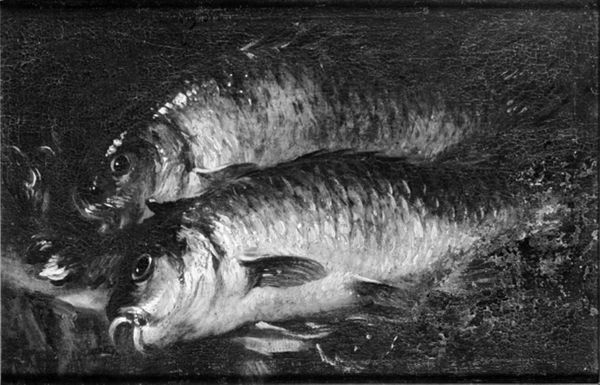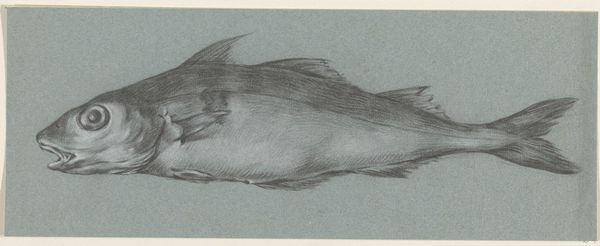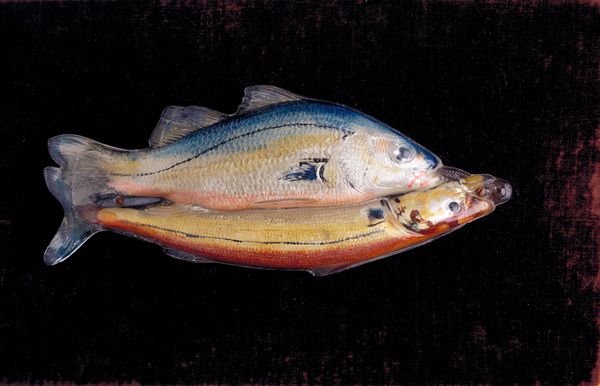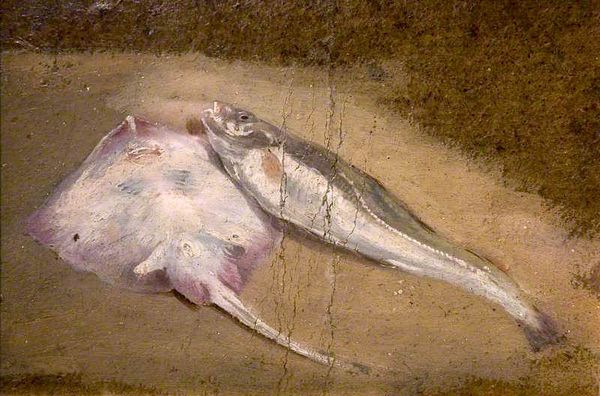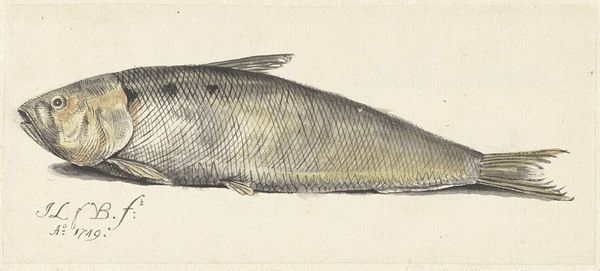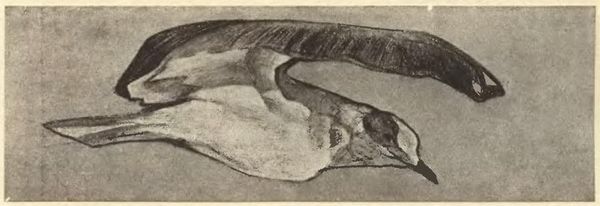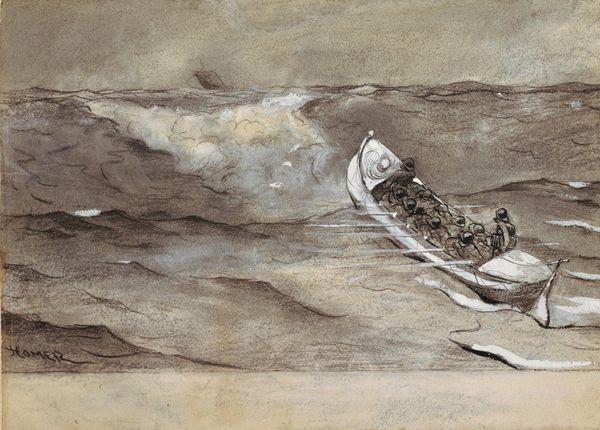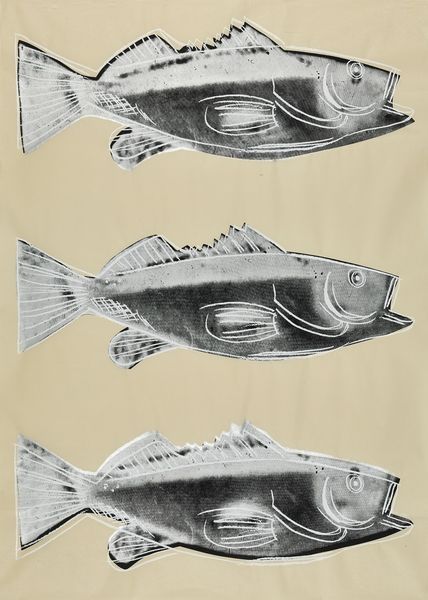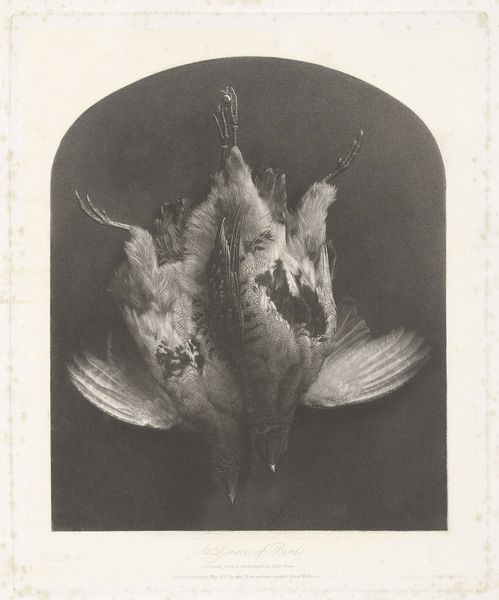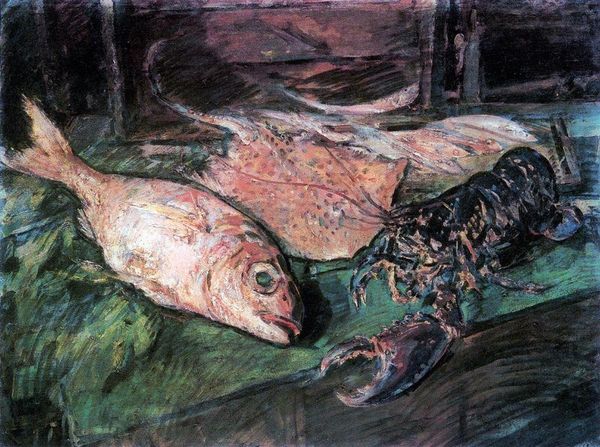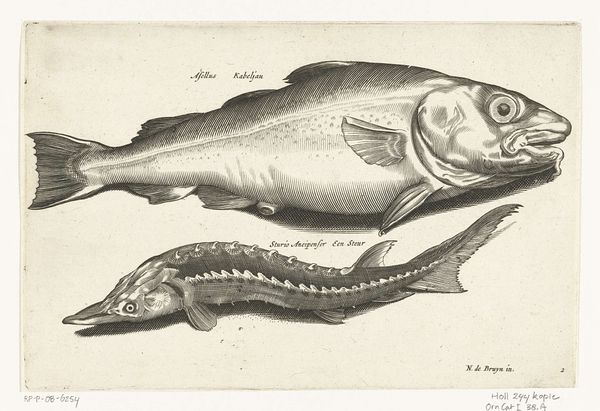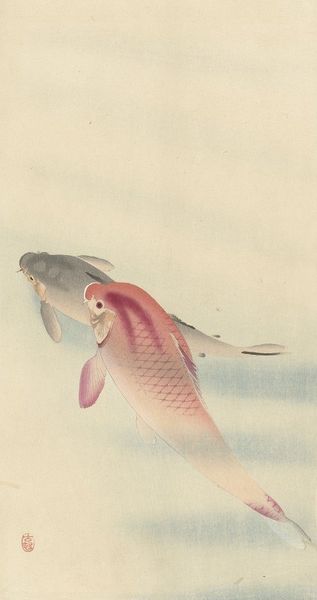
drawing, charcoal
#
drawing
#
charcoal drawing
#
charcoal
#
charcoal
#
monochrome
Dimensions: 29 x 36 in. (73.7 x 91.4 cm)
Copyright: Public Domain
Curator: This charcoal drawing, "Fish," by William Merritt Chase, created around 1909 or 1910, really stands out for its stark monochrome palette. There’s something almost severe in its simplicity, isn’t there? What grabs your attention first? Editor: Well, I'm struck by the composition - how the fish are arranged on what looks like a platter. It seems like such a commonplace subject rendered in this very intense way using charcoal. It makes me wonder about his artistic intentions when he chose the materials he worked with. How do you read this artwork? Curator: Consider the context: late 19th/early 20th century. The rise of industrial production impacts artmaking. Chase, a champion of Impressionism, employs charcoal, a readily available and relatively inexpensive material, even for a still life that traditionally might have been painted in oil. Does that challenge the boundary between high art and everyday life? What do you think that communicates about his practice and, potentially, his social views? Editor: So, you're saying his choice of charcoal might reflect a changing attitude towards materials, maybe democratizing art in some way? Moving away from solely the more traditionally valued oil paints? Curator: Exactly. Look closely. The way he uses the charcoal. Quick, expressive strokes. Not trying to hide the process, but emphasizing it. This wasn't about meticulous rendering, but about capturing something essential about those fish, about the act of observation and creation. It makes one wonder about the labor involved in producing even something as seemingly simple as a charcoal stick, connecting art to industry in an interesting way. Where do these materials originate and how are they acquired, transported, distributed? Editor: That's a totally fresh perspective for me! I hadn't thought about it that way before. I was just seeing dead fish on a platter. Curator: And hopefully, you are now able to consider artmaking as deeply entrenched within political and social economies. This artwork exemplifies how everyday, traditionally marginalized art materials are imbued with social context, bridging gaps between practices deemed 'high' and 'low' art. It shifts the analysis to labor, and questions around materiality, consumption and value. Editor: This definitely sheds light on considering material choices of artwork. I never really took a moment to consider charcoal! Curator: Right! Materiality isn't neutral, nor an accident, when one seriously considers the labor of artistic creation!
Comments
No comments
Be the first to comment and join the conversation on the ultimate creative platform.
